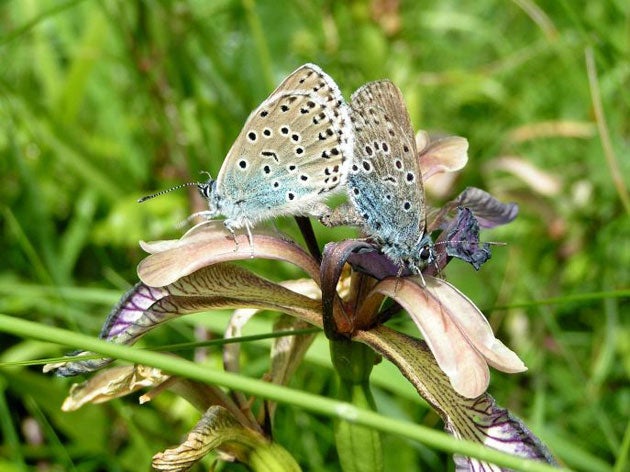Rare butterfly rises again

Your support helps us to tell the story
From reproductive rights to climate change to Big Tech, The Independent is on the ground when the story is developing. Whether it's investigating the financials of Elon Musk's pro-Trump PAC or producing our latest documentary, 'The A Word', which shines a light on the American women fighting for reproductive rights, we know how important it is to parse out the facts from the messaging.
At such a critical moment in US history, we need reporters on the ground. Your donation allows us to keep sending journalists to speak to both sides of the story.
The Independent is trusted by Americans across the entire political spectrum. And unlike many other quality news outlets, we choose not to lock Americans out of our reporting and analysis with paywalls. We believe quality journalism should be available to everyone, paid for by those who can afford it.
Your support makes all the difference.A threatened butterfly has bounced back after last year's bad weather to increase its numbers at one of the best sites for the species in Europe, the Wildlife Trusts said yesterday.
Last year populations of the large blue butterfly fell at Green Down nature reserve, managed by the Somerset Wildlife Trust, as a result of a spring drought and poor weather during the flight period.
But this year more than 3,000 butterflies took flight in June at the site, which was recently chosen as one of 20 Butterfly Survival Zones in a bid to save the country's rarest species.
The Somerset Wildlife Trust said the site had become one of the best in Europe for the large blue since the species was reintroduced to the reserve in 1992.
The large blue butterfly became extinct in the UK in 1979 and has since been reintroduced in south west England.
It is considered to be globally threatened, as a result of loss and bad management of its habitat, and is one of a number of species prioritised for conservation action under the UK Biodiversity Action Plan (BAP).
The population at Green Down, a small and fragile site which has to be closed to the public during the flight period, has been used as a donor site for further re-introductions in the area.
The butterfly's numbers have been boosted by local farmer James Stratton who uses his Dorset horn sheep and ruby red Devon cattle to graze the site in a way which help the reserve's wildlife.
Join our commenting forum
Join thought-provoking conversations, follow other Independent readers and see their replies
Comments